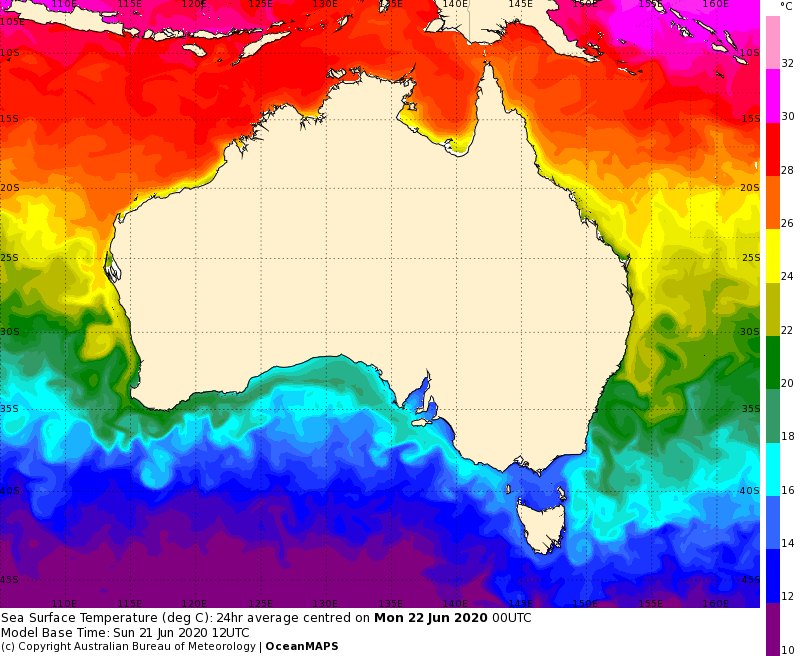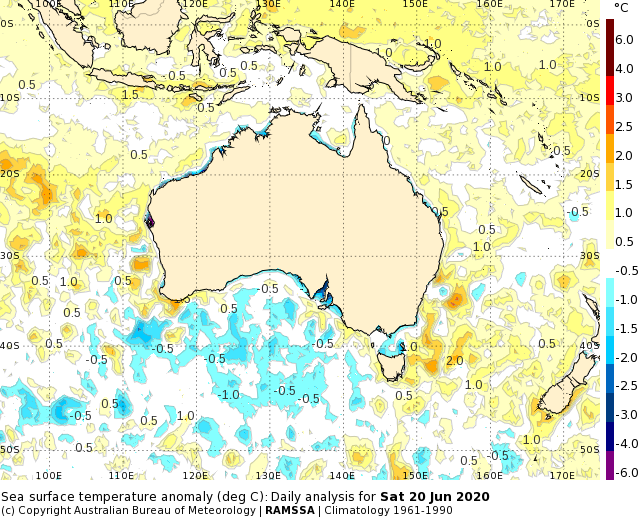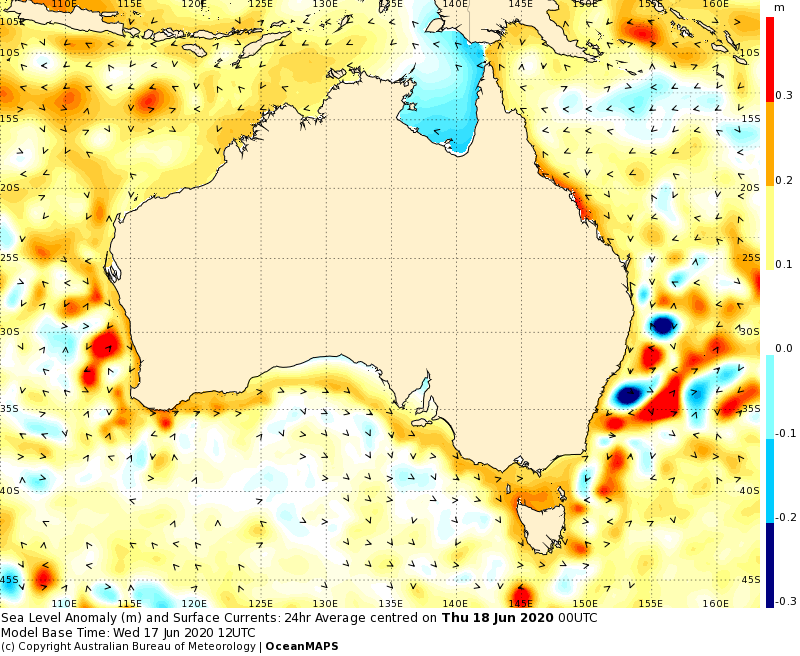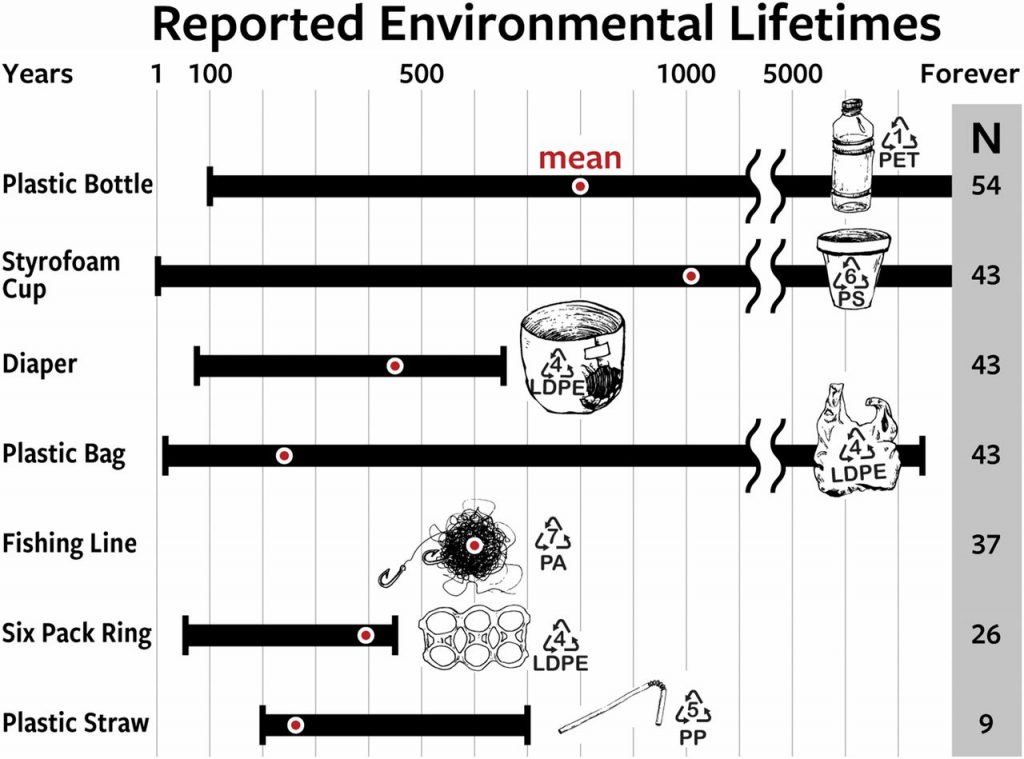With World Ocean Day 2020 celebrated earlier this month (June 8), it is time to welcome you all back to the Ocean Outlook blog!
SST update
Winter has heralded inshore cooling, with the coastal waters of northern WA, NT and QLD seemingly bathed in yellow highlighter in the OceanMAPS sea surface temperature forecast chart.

Despite this, the northern waters are currently warmer than average, as they have been for weeks. Both the northwest shelf and the Coral Sea recorded marine heatwaves this year and, although the extreme heating has lessened, the warm anomalies are persisting.

Elsewhere, the Great Australian Bight is generally cooler than average, while a region east of Tasmania is forecast to remain warm for a second week. The southwestern waters of WA are warming up on the surface.
Eddy trail
Over the last month, there have been plenty of eddies forming off the strengthening Leeuwin current along the WA coast. Meanwhile, warm and cold eddies have lined up along the NSW coast, showing up strongly in the sea level anomaly chart below.

The eddies are creating strong warm and cold temperature anomalies in the waters off the east coast, and are forecast to persist for the rest of the month.

Plastic infographics
Marine chemists from Woods Hole Oceanographic Institute have recently explored how the persistence of plastic in the environment is communicated to the public using infographics. They found that the “facts” were generally inconsistent as well as short on underlying science. Despite this, “…unlike recycling of plastic goods [only 9% of total plastic waste in 2015 was recycled], recycling of this non–peer-reviewed information is extremely efficient.”

While the researchers noted that it was important to maintain public awareness of the persistence of plastic in the environment, the fate of the various forms of plastic we produce is still surprisingly unclear. The actual length of time different plastics take to degrade, and the chemicals they break down to, is the subject of active research.
More than 90% of plastic that enters our oceans remains missing and is believed to be in the deep sea, funnelled into hotspots by deep-sea circulation.



Well done Lucinda – very interesting to read plastic infographics!